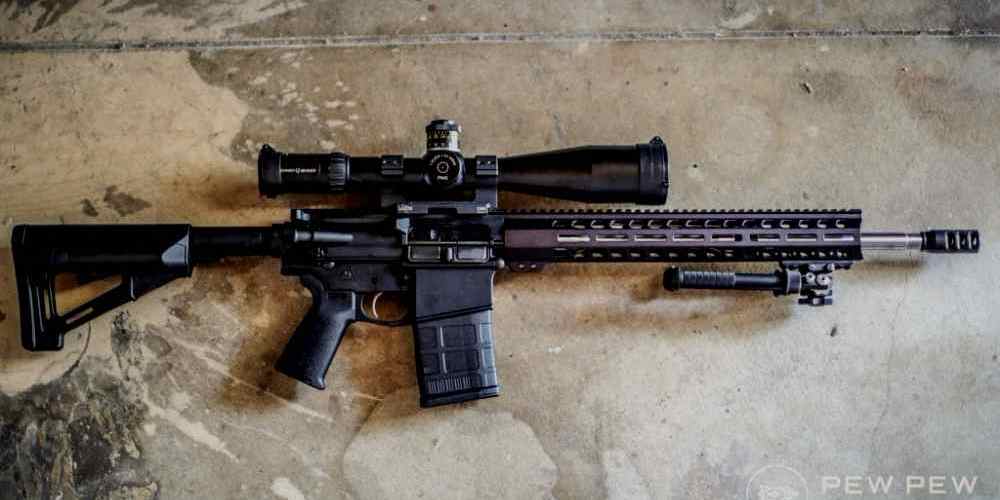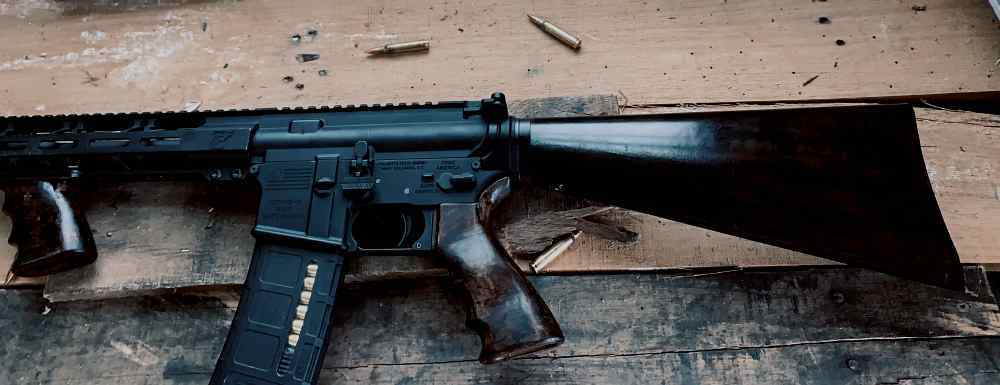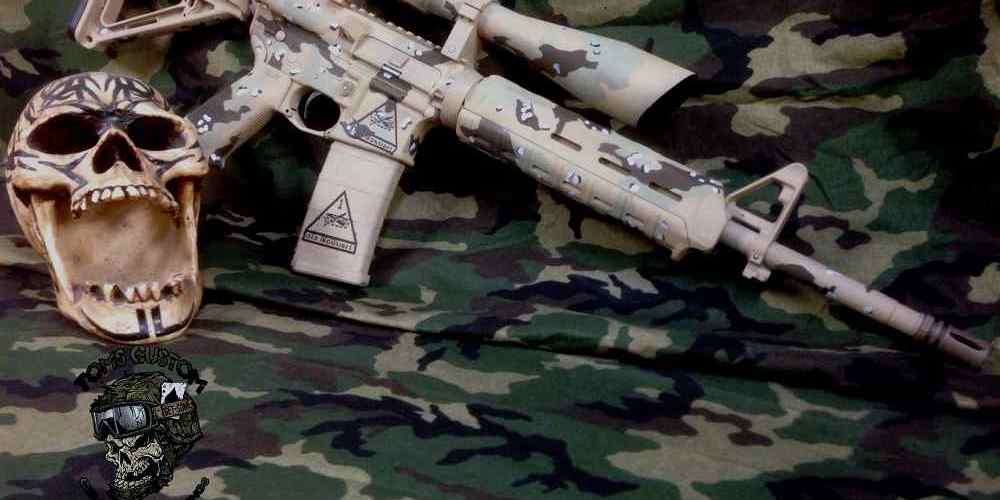“Unlocking the power of precision with AR-15 barrel lengths.”
Pros and Cons of Different AR-15 Barrel Lengths
When it comes to choosing the right AR-15 barrel length, there are a few key factors to consider. The length of the barrel can have a significant impact on the performance of your rifle, so it’s important to understand the pros and cons of different options before making a decision.
One of the most common barrel lengths for AR-15 rifles is 16 inches. This length strikes a good balance between maneuverability and accuracy, making it a popular choice for many shooters. A 16-inch barrel is also legal for civilian use without requiring any special permits, making it a convenient option for those looking to purchase a new rifle.
On the other end of the spectrum, longer barrels, such as 20 inches or even 24 inches, offer increased velocity and accuracy. The longer barrel allows for more complete powder burn, resulting in higher bullet velocities and improved long-range accuracy. However, longer barrels can be heavier and less maneuverable, making them less ideal for close-quarters combat or hunting in dense brush.
Conversely, shorter barrels, such as 10.5 inches or 14.5 inches, are popular for their compact size and lightweight design. These barrels are ideal for tactical applications where maneuverability is key, such as home defense or law enforcement operations. However, shorter barrels can sacrifice some velocity and accuracy compared to longer options, so it’s important to weigh the trade-offs before making a decision.
Another factor to consider when choosing an AR-15 barrel length is the type of shooting you plan to do. If you primarily shoot at close ranges, a shorter barrel may be more suitable for your needs. Conversely, if you plan to shoot at longer ranges, a longer barrel may be a better choice. It’s important to consider your intended use for the rifle when selecting a barrel length to ensure that it meets your specific needs.
In addition to considering the pros and cons of different barrel lengths, it’s also important to think about the type of ammunition you plan to use. Different barrel lengths can affect the performance of certain types of ammunition, so it’s important to choose a barrel length that is compatible with the ammo you plan to shoot. For example, shorter barrels may not provide enough velocity to effectively stabilize heavier bullets, while longer barrels may be overkill for lighter rounds.
Ultimately, the best AR-15 barrel length for you will depend on your individual needs and preferences. It’s important to consider factors such as maneuverability, accuracy, and intended use when making a decision. By weighing the pros and cons of different barrel lengths and considering how they will impact your shooting experience, you can choose a barrel length that will help you get the most out of your AR-15 rifle.
How Barrel Length Affects Accuracy and Velocity
When it comes to choosing the right AR-15 barrel length, there are a few key factors to consider. One of the most important considerations is how barrel length affects accuracy and velocity. Understanding the relationship between these two factors can help you make an informed decision when selecting a barrel for your AR-15.

Barrel length plays a significant role in determining the accuracy of a rifle. In general, longer barrels tend to be more accurate than shorter barrels. This is because longer barrels provide a longer sight radius, which can help improve your aim and make it easier to hit your target. Additionally, longer barrels typically have a higher muzzle velocity, which can also contribute to improved accuracy.
On the other hand, shorter barrels are often more maneuverable and easier to handle, making them a popular choice for tactical applications. However, shorter barrels may sacrifice some accuracy in exchange for their compact size. It’s important to strike a balance between barrel length and accuracy to ensure that you get the best performance from your AR-15.
In addition to accuracy, barrel length also affects the velocity of a bullet. In general, longer barrels tend to produce higher muzzle velocities, which can result in greater energy transfer and improved terminal ballistics. This can be particularly important for hunting or self-defense applications, where stopping power is a key consideration.
Shorter barrels, on the other hand, may produce lower muzzle velocities, which can impact the performance of certain types of ammunition. For example, some types of ammunition may require a certain minimum velocity to expand properly upon impact. If your barrel is too short, you may not achieve the necessary velocity to ensure reliable expansion.
When selecting a barrel length for your AR-15, it’s important to consider your intended use for the rifle. If you plan to use your AR-15 for long-range shooting or precision shooting competitions, a longer barrel may be the best choice. However, if you need a compact and maneuverable rifle for close-quarters combat or home defense, a shorter barrel may be more appropriate.
It’s also worth noting that barrel length is just one factor that can affect accuracy and velocity. Other factors, such as barrel twist rate, ammunition type, and shooting technique, can also play a role in determining the performance of your AR-15. It’s important to consider all of these factors when selecting a barrel for your rifle to ensure that you get the best possible performance.
In conclusion, understanding how barrel length affects accuracy and velocity is essential when selecting a barrel for your AR-15. Longer barrels tend to be more accurate and produce higher muzzle velocities, while shorter barrels are more maneuverable but may sacrifice some accuracy. By considering your intended use for the rifle and balancing these factors, you can choose a barrel length that meets your needs and helps you get the most out of your AR-15.
Choosing the Right Barrel Length for Your AR-15 Build
When it comes to building your own AR-15, one of the most important decisions you’ll need to make is choosing the right barrel length. The barrel length of your AR-15 can have a significant impact on its performance, so it’s crucial to understand the differences between various lengths and how they can affect your shooting experience.
Barrel length is measured from the bolt face to the end of the barrel, excluding any muzzle devices. The most common barrel lengths for AR-15s are 16 inches, 18 inches, and 20 inches, although you can find barrels as short as 7.5 inches and as long as 24 inches. Each length has its own advantages and disadvantages, so it’s essential to consider your intended use for the rifle before making a decision.
A shorter barrel length, such as 16 inches or less, is ideal for close-quarters combat and tactical situations. Shorter barrels are lighter and more maneuverable, making them easier to handle in tight spaces. However, shorter barrels can also reduce muzzle velocity and accuracy, especially at longer ranges. If you plan on using your AR-15 for home defense or as a compact rifle for hunting, a shorter barrel length may be the best option for you.
On the other hand, longer barrel lengths, such as 18 inches or 20 inches, are better suited for long-range shooting and precision shooting. Longer barrels provide increased muzzle velocity and better accuracy, making them ideal for shooting targets at extended distances. However, longer barrels can be heavier and less maneuverable, which may not be ideal for all shooters. If you plan on using your AR-15 for hunting or competitive shooting, a longer barrel length may be the better choice for you.
It’s also essential to consider the twist rate of the barrel when choosing a barrel length. The twist rate refers to how many inches it takes for the rifling in the barrel to make one complete revolution. A faster twist rate, such as 1:7 or 1:8, is better suited for stabilizing heavier bullets, while a slower twist rate, such as 1:9 or 1:12, is better for lighter bullets. Matching the twist rate to the weight of the bullets you plan on using can help improve accuracy and performance.
Ultimately, the best barrel length for your AR-15 will depend on your personal preferences and intended use for the rifle. If you’re unsure which length to choose, consider seeking advice from experienced shooters or gunsmiths who can help guide you in the right direction. Remember that the barrel length is just one factor to consider when building your AR-15, so be sure to research and consider all aspects of the rifle before making a decision.
In conclusion, understanding AR-15 barrel lengths and their impact is crucial for building a rifle that meets your needs and preferences. Whether you choose a shorter barrel for close-quarters combat or a longer barrel for long-range shooting, be sure to consider all factors before making a decision. With the right barrel length, you can build an AR-15 that performs optimally and meets your shooting goals.
Understanding Gas Systems and Barrel Length Compatibility
When it comes to choosing the right AR-15 barrel length, there are a few key factors to consider. One of the most important considerations is how the barrel length will impact the gas system of your rifle. Understanding the relationship between gas systems and barrel lengths is crucial for ensuring optimal performance and reliability.
Gas systems play a critical role in the function of an AR-15 rifle. The gas system is responsible for cycling the action of the rifle, which in turn allows for the firing of multiple rounds in rapid succession. There are three main types of gas systems commonly used in AR-15 rifles: direct impingement, piston, and blowback.
Direct impingement gas systems are the most common type found in AR-15 rifles. In a direct impingement system, gas is tapped from the barrel and directed back into the upper receiver to cycle the action. This system is known for its simplicity and reliability, but it can be sensitive to changes in barrel length.
Piston gas systems operate on a similar principle to direct impingement systems, but with one key difference. In a piston system, the gas is used to drive a piston that cycles the action, rather than being directed back into the upper receiver. This can help reduce fouling and heat buildup in the upper receiver, but it may require a specific barrel length to function properly.
Blowback gas systems are less common in AR-15 rifles, but they are still worth considering. In a blowback system, the force of the expanding gas is used to push the bolt carrier group rearward, cycling the action. This system is simple and reliable, but it can be sensitive to changes in barrel length.
When choosing an AR-15 barrel length, it is important to consider how it will impact the gas system of your rifle. Different gas systems may require specific barrel lengths to function properly. For example, a direct impingement system may work best with a standard 16-inch barrel, while a piston system may require a longer or shorter barrel to function optimally.
It is also important to consider how barrel length will impact the overall performance of your rifle. In general, longer barrels tend to offer better accuracy and velocity, while shorter barrels are more maneuverable and lightweight. However, longer barrels may be more prone to heat buildup and can be less practical for close-quarters combat.
Ultimately, the best AR-15 barrel length for you will depend on your specific needs and preferences. If you are looking for a versatile rifle that can perform well in a variety of situations, a mid-length barrel around 16 inches may be a good choice. If you are looking for a more specialized rifle for long-range shooting or hunting, a longer barrel may be more suitable.
In conclusion, understanding the relationship between gas systems and barrel lengths is crucial for choosing the right AR-15 barrel length. Different gas systems may require specific barrel lengths to function optimally, and it is important to consider how barrel length will impact the overall performance of your rifle. By taking these factors into account, you can ensure that your AR-15 rifle is reliable, accurate, and well-suited to your needs.
Exploring the Legalities of Short Barreled Rifles (SBRs) vs. AR-15 Pistols
When it comes to AR-15 rifles, one of the key factors that can greatly impact the performance and handling of the firearm is the barrel length. Understanding the different barrel lengths available for AR-15 rifles and how they can affect the overall shooting experience is crucial for any gun enthusiast or owner.
One important aspect to consider when discussing AR-15 barrel lengths is the legalities surrounding short barreled rifles (SBRs) versus AR-15 pistols. In the United States, the National Firearms Act (NFA) regulates the ownership and transfer of firearms, including SBRs. An SBR is defined as a rifle with a barrel length of less than 16 inches or an overall length of less than 26 inches. To legally own an SBR, individuals must apply for a tax stamp from the Bureau of Alcohol, Tobacco, Firearms and Explosives (ATF) and undergo a thorough background check.
On the other hand, AR-15 pistols are not subject to the same regulations as SBRs. AR-15 pistols are classified as handguns and do not have a stock attached, making them legal to own without the need for a tax stamp. However, it is important to note that adding a vertical foregrip to an AR-15 pistol can classify it as an AOW (Any Other Weapon) under the NFA, requiring a tax stamp for ownership.
When it comes to choosing between an SBR and an AR-15 pistol, it ultimately comes down to personal preference and intended use. SBRs offer the benefits of a shorter barrel length, which can result in improved maneuverability and handling in tight spaces. However, the added regulations and paperwork required for owning an SBR may deter some gun owners from pursuing this option.
AR-15 pistols, on the other hand, provide a compact and lightweight alternative to traditional rifles. The lack of a stock allows for greater versatility in shooting positions and makes them easier to transport. Additionally, the lack of NFA regulations makes AR-15 pistols a popular choice for those looking for a more streamlined ownership process.
When it comes to barrel lengths for AR-15 rifles, there are several options available, ranging from as short as 7.5 inches to as long as 20 inches. The most common barrel lengths for AR-15 rifles are 16 inches and 18 inches, with each offering its own set of advantages and disadvantages.
A shorter barrel length, such as 7.5 inches, can provide increased maneuverability and reduced weight, making it ideal for close-quarters combat or tactical situations. However, shorter barrels can also result in decreased muzzle velocity and accuracy at longer distances.
On the other hand, longer barrel lengths, such as 18 inches, can offer improved accuracy and muzzle velocity, making them better suited for long-range shooting. However, longer barrels can also be heavier and less maneuverable, which may not be ideal for all shooting scenarios.
Ultimately, the best barrel length for an AR-15 rifle will depend on the individual shooter’s preferences and intended use. Whether you opt for a shorter barrel for increased maneuverability or a longer barrel for improved accuracy, understanding the impact of barrel length on your AR-15 rifle is essential for making an informed decision.





